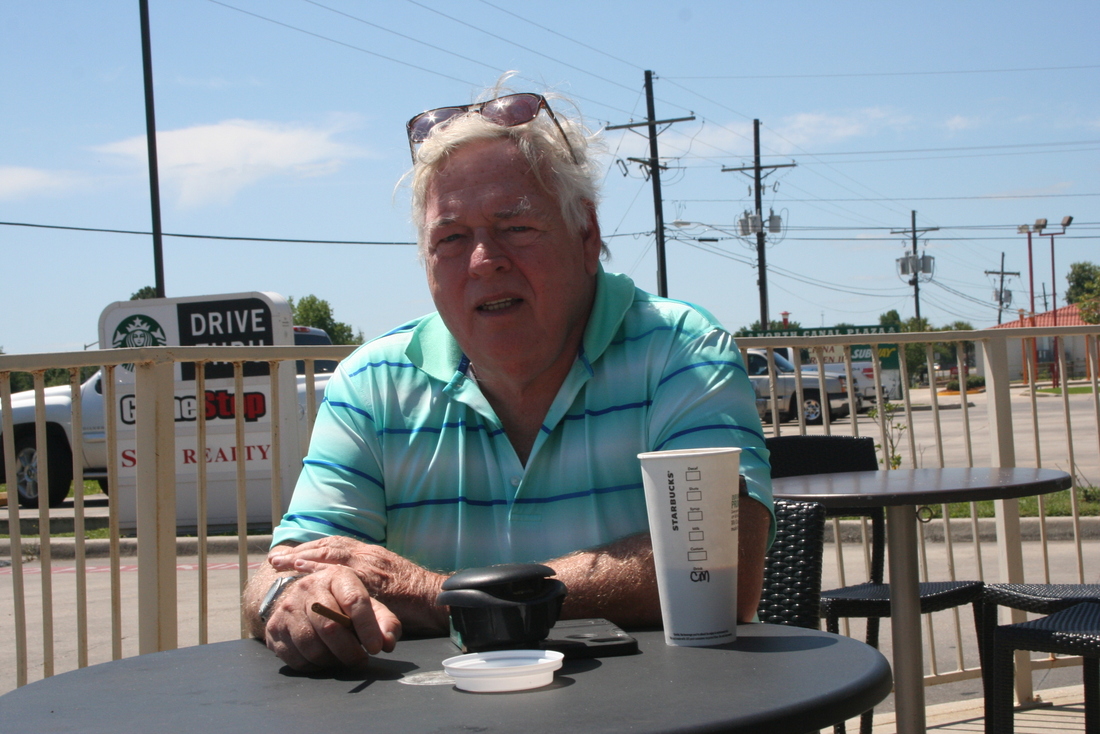
John DeSantis is the type of old-school, wild-haired, chain-smoking keeps-a-police-scanner-in-his-car-which-also-serves-as-an-office journalist that Hollywood directors used to make movies about.
DeSantis grew up in the New York City borough of Queens and covered homicides as a crime reporter in the city during the violent 1970s and 1980s. In 1991 he published a book about a notorious racially-tinged Brooklyn murder in which a teenager was shot through the heart. Then, in 1992, looking for a change and curious what sort of secrets a vibrant landscape long touched by tragedy and haunted by ghosts still held, he moved to Louisiana. Turns out, numerous dark secrets remain buried in these bayous. In November DeSantis published his latest book, The Thibodaux Massacre: Racial Violence and the 1887 Sugar Cane Labor Strike, which tells the largely forgotten story of a group of black sugar cane plantation workers—and their families—who were gunned down by white vigilantes, including a future US Congressman.
Digital Dying recently sat down with DeSantis at a Starbucks in Thibodaux, the central Louisiana city where he works as senior staff writer at The Times of Houma-Thibodaux. DeSantis wore loafers, khakis, a green collared shirt, and smoked numerous thin little Seneca cigars. He looked every bit the Big Apple crime reporter, now deeply settled in the rhythms of the bayou.
You left New York City as this big time crime reporter with a major book under your belt, did you find what you were looking for down here in the bayous—and what exactly are you looking for?
I first moved to New Orleans, which was a little creepy, but satisfying. There are many places where you can feel the presence of the dead. There was a reverence, I felt that some part of myself had touched some part of the past. I knew I didn’t know anything, so I believed everything and nothing. I tried to keep my eyes open. I tried to keep my mind open. I was hungry to learn the things that people wouldn’t tell someone like me. And I learned that for people to share some of these things—not just about ghosts, but about culture and spirits—they had to trust you. It took a while to gain that trust, but eventually I was able to break through.
How are the ghosts of Louisiana different than ghosts in other parts of the country?
People around here don’t see ghosts, they see angels. There is a family I used to live near, and the man was one of these guys who skinned alligators, which a lot of people do around here. This family had seen something white and ghost-like. It could have been small egrets, but these people know egrets and were convinced it was angels. Their grandfather had died recently and lived in this little house in the back, and their grandmother had died recently too. So they attributed it to that. One thing about this region is that many of these old families are still here and living in the same house, and many of the old families that owned the plantations are still here too. So we’re not talking about Mr. Anonymous ghost, we are talking about ancestors, and we are talking about family members. There is a great comfort among these people that they have contact with something that is other-dimensional, though they would not use that word. There is a highly spiritual component to it.
Talk about how ghost stories are actually part of the cultural and religious fabric of southern Louisiana?
One of my most cherished memories was being out for a week on a shrimp boat in the Gulf. The name of the boat was God’s Gift. One day a pretty decent-sized hardhead catfish skull came out in the trawl. If you hold a hardhead catfish skull upside down it looks like a beautifully-ornate crucifix. The captain showed me that then shook the skull, and it made a sound like a rattle. “You know what that is?” he asked. “No,” I said. He said, “That’s in there because that’s the sound of the dice, when the soldiers were gambling for Jesus’s clothes.” I was learning that there’s a very strong sense of wonder among these people, and these things were being passed down through families. There are other things like that, related to the objects of this place and its culture. Such as, if you look on the inside of a crab shell after you boil it you can see an image of the Virgin Mary.
What are some other “ghost stories” unique to the bayou?
One story many people down here know about is the rougarou, or the Cajun werewolf. This is related to the French idea of the werewolf that immigrants brought to America from Europe hundreds of years ago. There is a Rougarou Fest in Houma, and it gets bigger every year. One year I was trying to find people who had actually seen the rougarou. One Cajun fisherman had a story about being out fishing late with some friends, while coming back home they encountered the rougarou at a crossroads. The fisherman described this creature as being as big as a man. I asked him if it was like a dog or a wolf? “No,” the guy said, “it was like a rabbit. It was the rougarou, but it was a giant rabbit.” He was convinced of it. I was like, “Did it do anything to you?” He said, “No, we run.”
One-hundred sixty years ago this area was occupied by plantations, which were worked by enslaved African American men and women. Can you talk about some of the things related to that time that still lie below the surface?
At Southdown Plantation, in Houma, they were recently building a new library and they brought in scientists to do geothermal imaging. What they found was that the marked cemetery there on the plantation grounds was really only part of the burial ground, and beneath it was another 300 or so unmarked burial sites. Those would have been from slavery times. There is an understanding in this sugar country that if you see a sugar cane field and inexplicably there is a big old tree, it may be there because it is marking a large burial area. From what I understand, African people and people who descended from Africa often buried people in a circular formation around a tree, and the burials would radiate outwards.
But like anywhere, Thibodaux is changing, right? Here we are meeting at a Starbucks and staring across a main street at a new subdivision. How have these changes of land and space affected the culture, and the ghosts of the past?
If you look behind us here at this subdivision, most of these places where you see new houses used to be cane fields that once belonged to a plantation. And there would have been burial places there, and those have all now been built over. Slave burial grounds often did not even have markers. My guess is there would have been slaves buried out in those cane fields, which means the remains of those people are still there, buried beneath that subdivision. We have not been good at preserving burial places in southern Louisiana, but we are getting better.
Lastly, tell me about your new book, and how you found your way to that story?
So I didn’t move back north, like I once thought I might. I ended up staying in southern Louisiana and meeting people. I got a job in this area—about an hour west of New Orleans—as an education reporter for one of the local papers. I covered school board meetings then I started writing crime stories, and doing things like studying jail rosters. I wrote stories about why people were in the parish jail, and it turns out many of these people were there for relatively minor things. My first knowledge that a mass murder of black plantation workers occurred in Thibodaux, Louisiana came in 1995. A few years back I wrote an article on the topic for the Times of Houma. The article drew attention, and an editor with The History Press asked if I was interested in writing a book on the subject.
**
John DeSantis spoke in March about the book at the Tennessee Williams Literary Festival, in New Orleans. More information on The Thibodaux Massacre: Racial Violence and the 1887 Sugar Cane Labor Strike can be found here. DeSantis is working with a diverse group of community members on a project to try and locate the remains of the victims of the massacre, which are believed to be beneath a property now owned by the American Legion, near Gerald T. Peltier Drive and Narrow Street, in Thibodaux. “It’s not enough to tell the story,” DeSantis recently told a local reporter. “We can make it where in the 21st century, people [get] together to do what they can to make it right.”











al patalona
I went to high school in NY City with John. Most of us figured him to become a writer. He was a quiet type but you didn’t want to get into a political debate with him because he’d just grind you up. Nice guy though! I’m glad he found his niche.
Robert C Maluenda
Met John in seventh and eight grade at St. Joan of Arc school. Even in the early 70’s he was politically active. He got me to campaign with him for John Ashford (an unknown) for president back in 1971-72. Great to see his success as a writer!